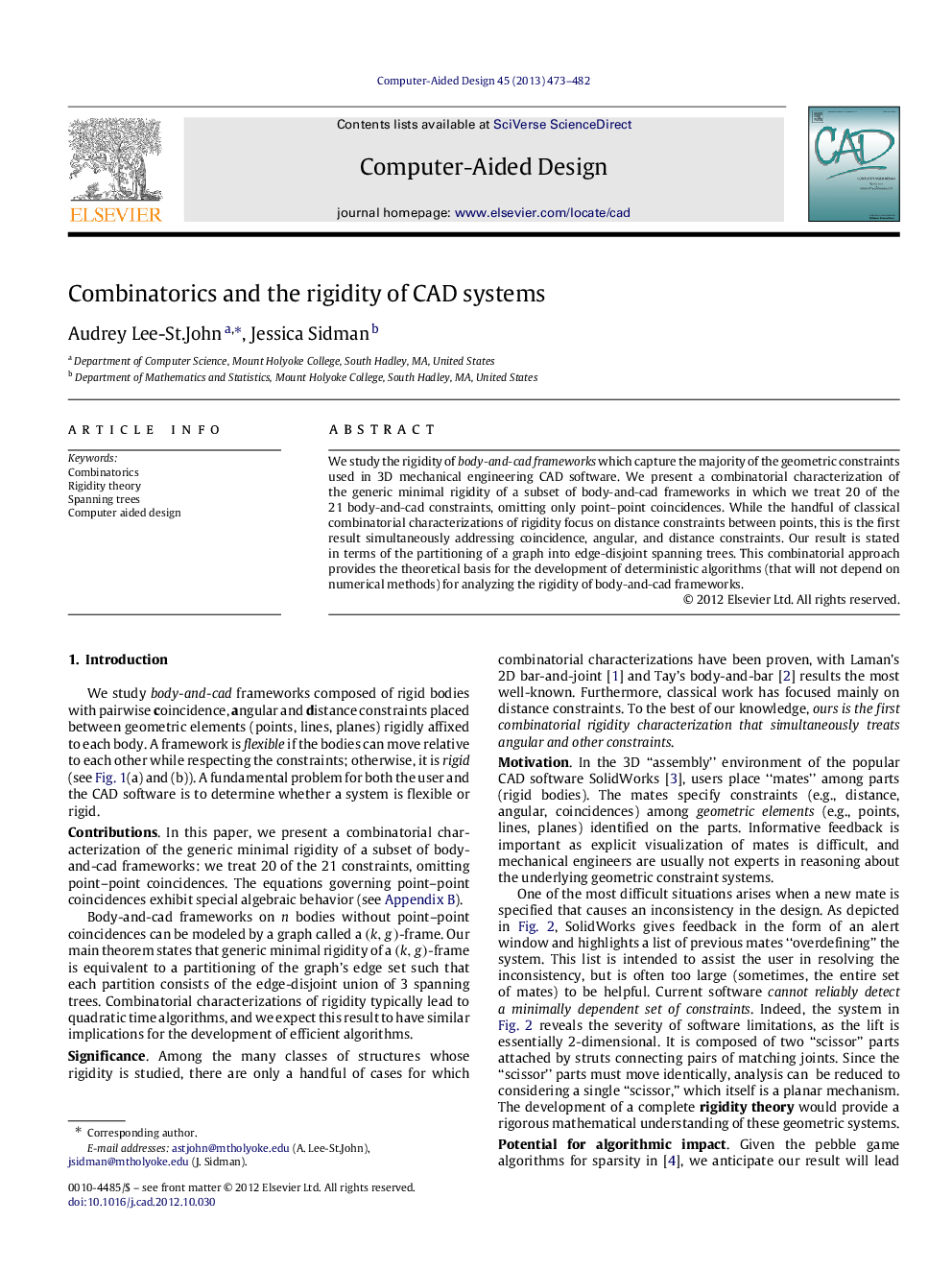| Article ID | Journal | Published Year | Pages | File Type |
|---|---|---|---|---|
| 440172 | Computer-Aided Design | 2013 | 10 Pages |
We study the rigidity of body-and-cad frameworks which capture the majority of the geometric constraints used in 3D mechanical engineering CAD software. We present a combinatorial characterization of the generic minimal rigidity of a subset of body-and-cad frameworks in which we treat 20 of the 21 body-and-cad constraints, omitting only point–point coincidences. While the handful of classical combinatorial characterizations of rigidity focus on distance constraints between points, this is the first result simultaneously addressing coincidence, angular, and distance constraints. Our result is stated in terms of the partitioning of a graph into edge-disjoint spanning trees. This combinatorial approach provides the theoretical basis for the development of deterministic algorithms (that will not depend on numerical methods) for analyzing the rigidity of body-and-cad frameworks.
► 3D mechanical engineering CAD designs can be modeled by body-and-cad frameworks. ► We simultaneously address coincidence, angular, and distance constraints. ► We prove a combinatorial characterization of generalized body-and-cad rigidity. ► The characterization requires partitioning a graph into edge-disjoint spanning trees.
